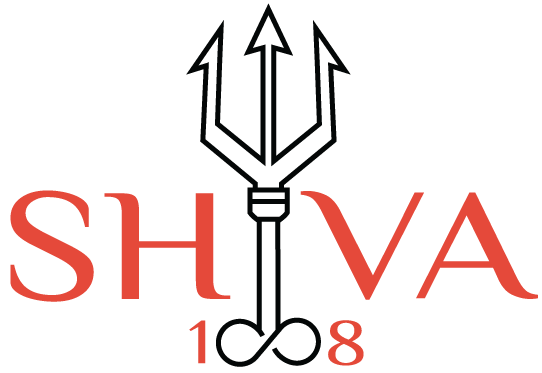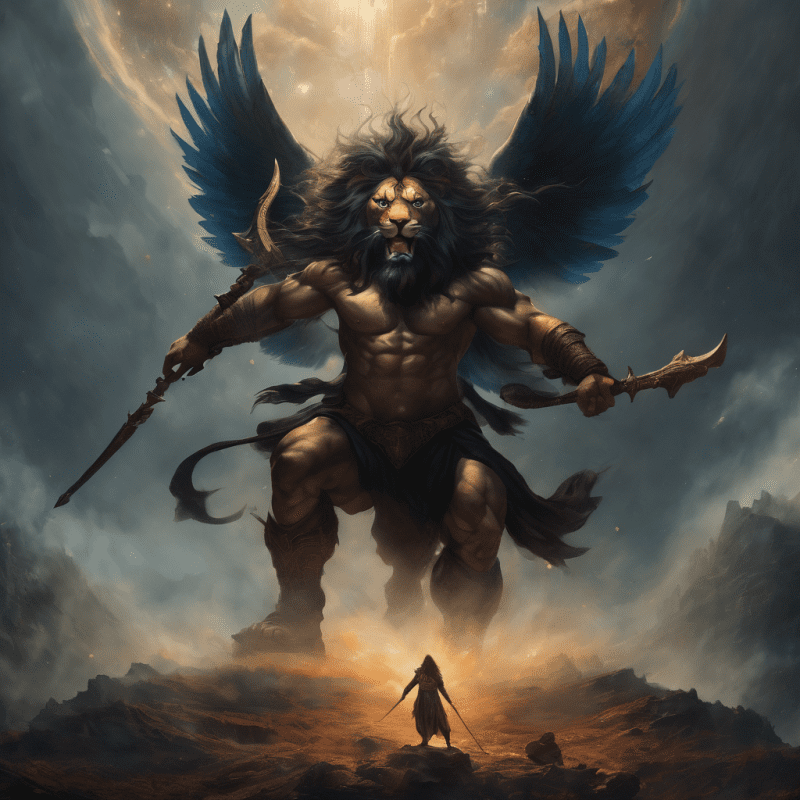Sharabha is a mythical creature mentioned in Hindu and Jain traditions. The Sharabha is often depicted as a beast with a mix of various animals, combining features of a lion, a bird (often a peacock), and sometimes other creatures.
One of the notable references to Sharabha is found in Hindu mythology, particularly in relation to Lord Shiva. According to some versions of the story, when the form of Lord Shiva as Sharabha is needed to subdue the ferocious Narasimha (the lion-man incarnation of Vishnu), Shiva takes the form of Sharabha. This form is said to be immensely powerful and capable of calming Narasimha’s intense anger.
The Sharabha avatar is not as commonly mentioned as some other avatars in Hindu mythology, but it holds significance in the context of specific narratives and iconography. It symbolizes the divine’s ability to take diverse forms to maintain cosmic balance and order.
As with many mythological concepts, interpretations may vary across different sources and traditions. If you have a specific context or aspect of Sharabha Avatar in mind, feel free to provide more details for a more accurate response.
Table of Content
Avatar Info
Incarnation
Place of Avatar
Sharabha Avatar is not widely recognized in mainstream Hindu mythology, but it is mentioned in certain texts like the Kurma Purana and the Shiva Purana. Sharabha is described as a composite creature with the features of a lion, bird, and other animals. This form is assumed by Lord Shiva to confront and subdue the fierce form of Lord Narasimha, who is part lion and part human.
The context for Sharabha Avatar arises when Lord Narasimha is in a heightened state of rage after slaying the demon Hiranyakashipu. In this state, Narasimha is difficult to control and pacify. It is then that Shiva transforms into the unique Sharabha form to calm and subdue Narasimha.
The incident of Sharabha Avatar is not associated with a specific place but is rather a narrative episode within the broader mythology. If you are looking for more specific details or a particular context related to Sharabha Avatar, please provide additional information, and I’ll do my best to assist you.
Purpose
In Hindu mythology, Sharabha is a mythical creature, and Sharabha Avatar refers to an incarnation of Lord Shiva in a unique and powerful form. This particular incarnation is not as well-known or frequently mentioned as some of Lord Vishnu’s avatars, for example. The purpose and context of Sharabha Avatar are associated with a specific incident in which Lord Shiva assumed this form.
According to a narrative found in the Shiva Purana, the Sharabha Avatar occurred when the intense rivalry between deities Vishnu and Shiva reached an unprecedented level. The story goes that Vishnu took the form of Narasimha (a man-lion avatar) and defeated the demon Hiranyakashipu. However, after the battle, Narasimha’s aggressive form became uncontrollable and posed a threat to the balance of the universe.
To counteract this situation, Lord Shiva assumed the Sharabha form, which is described as a creature with multiple legs, wings, and a thousand arms. Sharabha engaged Narasimha in a fierce battle, ultimately calming him down and restoring balance to the universe. After this event, Shiva is said to have reassumed his usual form.
The purpose of Sharabha Avatar, therefore, was to resolve the specific conflict between Narasimha and restore cosmic equilibrium. It’s important to note that the details and significance of these stories may vary across different texts and interpretations within Hindu mythology.
Pujas for Sharabha Avatar
Puja Vidhi
Performing Pooja to Sarabha can remove all the negative forces, confer protection from enemies and natural calamities, eliminate obstacles in marriage, bestow progeny, clear debts, and ensure success for the deserving.
Puja Time
Puja Benefits
The Sharabha Avatar is a less commonly known incarnation of Lord Shiva in Hindu mythology. It is described in certain scriptures like the Shiva Purana. Sharabha is depicted as a hybrid creature, with features of both a bird and an animal, and is said to be more powerful and fierce than any other being.
The Sharabha Avatar is associated with a specific purpose – to subdue and pacify the intense and destructive aspect of Lord Narasimha, the half-man, half-lion incarnation of Lord Vishnu. The story goes that when Narasimha took a ferocious form to deal with the demon Hiranyakashipu, he became uncontrollable and posed a threat to the entire universe. In response, Shiva assumed the Sharabha form to calm and pacify Narasimha.
The worship or puja of Sharabha Avatar is not as widely practiced or mainstream as some other forms of worship in Hinduism. Still, for those who resonate with this particular aspect of the divine, it might be performed with devotion and sincerity. Devotees may seek protection, strength, or resolution of conflicts through the worship of Sharabha Avatar.
As with any form of worship, the perceived benefits are often subjective and may include spiritual growth, protection from negative forces, and the blessings of the deity. If you’re considering performing a puja related to Sharabha Avatar, it’s advisable to consult with a knowledgeable priest or spiritual guide who can provide guidance based on the specific traditions and rituals associated with this form of worship.


